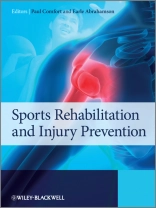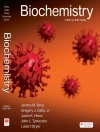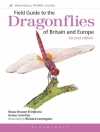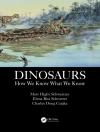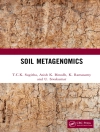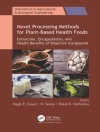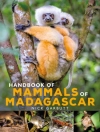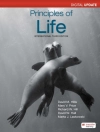This text provides a comprehensive, practical, evidence-based guide to the field. It covers each stage of the rehabilitation process from initial assessment, diagnosis and treatment, to return to pre-injury fitness and injury prevention. Presenting a holistic approach, this text also addresses the nutritional and psychological aspects of the rehabilitation process for the amateur sports enthusiast as well as elite athletes.
Divided into five parts, Parts I, II and III cover screening and assessment, the pathophysiology of sports injuries and healing and the various stages of training during the rehabilitation process. Part IV covers effective clinical decision making, and Part V covers joint specific injuries and pathologies in the shoulder, elbow wrist and hand, groin and knee.
Key features:
* Comprehensive. Covers the complete process from diagnosis and treatment to rehabilitation and prevention of injuries.
* Practical and relevant. Explores numerous real world case studies and sample rehabilitation programmes to show how to apply the theory in practice.
* Cutting Edge. Presents the latest research findings in each area to provide an authoritative guide to the field.
İçerik tablosu
Preface.
Acknowledgements.
About the editors.
List of contributors.
How to use this book.
PART 1 INTRODUCTION TO SPORTS REHABILITATION.
1 Introduction to sport injury management (Jeffrey A.
Russell).
PART 2 INJURY SCREENING AND ASSESSMENT OF
PERFORMANCE.
2 Injury prevention and screening (Phil Barter).
3 Assessment and needs analysis (Paul Comfort and Martyn
Matthews).
PART 3 PATHOPHYSIOLOGY OF MUSCULOSKELETAL INJURIES.
4 Pathophysiology of skeletal muscle injuries (Dr Lee
Herrington and Paul Comfort).
5 Tendons (Dr Stephen Pearson).
6 Pathophysiology of ligament injuries (Dror
Steiner).
7 Pathophysiology of skeletal injuries (Sarah
Catlow).
8 Peripheral nerve injuries (Elizabeth Fowler).
PART 4 EFFECTIVE CLINICAL DECISION MAKING.
9 An introduction to periodisation (Paul Comfort and Martyn
Matthews).
10 Management of acute sport injury (Jeffrey A.
Russell).
11 Musculoskeletal assessment (Julian Hatcher).
12 Progressive systematic functional rehabilitation (Earle
Abrahamson, Victoria Hyland, Sebastian Hicks, and Christo
Koukoullis).
13 Strength and conditioning (Paul Comfort and Martyn
Matthews).
14 Nutritional considerations for performance and rehabilitation
(Helen Matthews and Martyn Matthews).
15 Psychology and sports rehabilitation (Rhonda Cohen, Dr
Sanna M. Nordin and Earle Abrahamson).
16 Clinical reasoning (Earle Abrahamson and Dr Lee
Herrington).
PART 5 JOINT SPECIFIC INJURIES AND PATHOLOGIES.
17 Shoulder injuries in sport (Ian Horsley).
18 The elbow (Angela Clough).
19 Wrist and hand injuries in sport (Luke Heath).
20 The groin in sport (John Allen and Stuart Butler).
21 The knee (Nicholas Clark and Dr Lee Herrington).
22 Ankle complex injuries in sport (David Joyce).
23 The foot in sport (John Allen).
Index.
Yazar hakkında
Paul Comfort (BSC (Hons), MSc, PGCAP, CSCS*D, ASCC) is a
senior lecturer, programme leader for the MSc Strength and
Conditioning programme at the University of Salford. Paul is also
currently Head of Sports Science Support for Salford City reds
Rugby League Football Club and Coordinates the Strength and
Conditioning for England Lacrosse (men’s squad). He is a certified
Strength and Conditioning Specialist (Recertified with Distinction)
(CSCS*D) with the National Strength and Conditioning Association
and a founder member and Accredited Strength and Conditioning Coach
with the United Kingdom Strength and Conditioning Association. He
is also currently completing a part-time Ph D.
Earle Abrahamson (B Phys Ed, BA Hons, MA, BPS, BASRa T,
FRSM, BRCP, AHPCSA, HPCSA, Psy SSA) is a principal Lecturer,
teaching fellow and programme leader for the Sports Rehabilitation
and Injury Prevention programme at Middlesex University. Through
his programme leadership and teaching fellowship duties, Earle has
developed an interest in student learning and thinking. Earle spent
the majority of his life in South Africa, studying and working, and
moved to the UK in 2002. He is a South African-registered therapist
and psychologist and has membership and professional registration
with a number of UK authorities. Earle has worked extensively as a
sports rehabilitation with national and international teams,
including the world strongest man event. Earle sits on the
executive committee of the British Association of Sports
Rehabilitators and Trainers (BASRa T), as their student liaison of
ficer. In this role he deals with and promotes the BASRa T student
experience. Earle is the Middlesex University representative for
the higher education academy’s hospitality, leisure, sport and
tourism sector. He is currently working on a professional doctorate
investigating different learning approaches in the development of
clinical reasoning skills on undergraduate sports rehabilitation
programmes.
Earle is married to Emma and has a son, Benjamin. In his spare time
he enjoys sports and is an active cricketer and tennis player. He
further enjoys reading and music.
